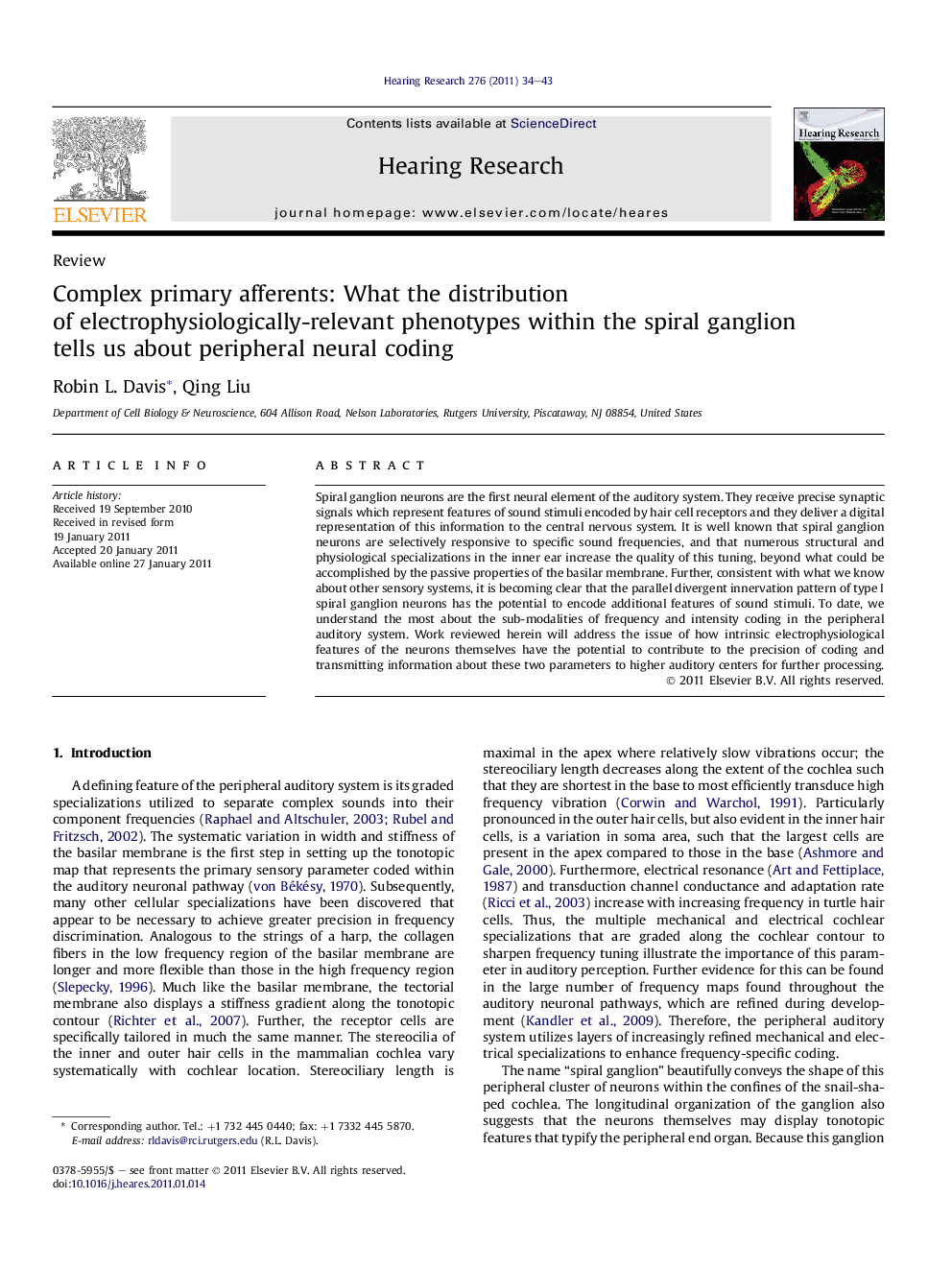| Article ID | Journal | Published Year | Pages | File Type |
|---|---|---|---|---|
| 4355570 | Hearing Research | 2011 | 10 Pages |
Spiral ganglion neurons are the first neural element of the auditory system. They receive precise synaptic signals which represent features of sound stimuli encoded by hair cell receptors and they deliver a digital representation of this information to the central nervous system. It is well known that spiral ganglion neurons are selectively responsive to specific sound frequencies, and that numerous structural and physiological specializations in the inner ear increase the quality of this tuning, beyond what could be accomplished by the passive properties of the basilar membrane. Further, consistent with what we know about other sensory systems, it is becoming clear that the parallel divergent innervation pattern of type I spiral ganglion neurons has the potential to encode additional features of sound stimuli. To date, we understand the most about the sub-modalities of frequency and intensity coding in the peripheral auditory system. Work reviewed herein will address the issue of how intrinsic electrophysiological features of the neurons themselves have the potential to contribute to the precision of coding and transmitting information about these two parameters to higher auditory centers for further processing.
► Neurons of the spiral ganglion possess electrophysiological specializations that may contribute to encoding of auditory information in vivo. ► Kinetic electrophysiological features are graded and change systematically along the tonotopic axis. ► Neuronal excitability is distributed such that the most sensitive neurons are located in the mid-cochlear region associated with greatest sensitivity. ► The sophisticated phenotypic tuning of spiral ganglion neurons undoubtedly plays a functional role in auditory signal encoding and should be carefully considered when designing new clinical approaches.
